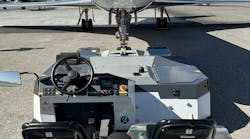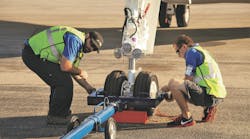IATA'S NEW ADRM
By Alex Bradley, Airport Planning Manager, IATA
A brief review of the industry standard airport development reference manual
The Airport Development Reference Manual (ADRM) is one of the International Air Transport Association's oldest and most respected documents. For 40 years it has been used as a cornerstone of best practice airport design in most areas of the world. It is an important guide for airlines, airports, government authorities, architects, and engineering consultants who are planning new or extending existing airport facilities.
Since the publication of the 8th edition of the ADRM, there have been
significant changes in aviation, particularly with respect to technology
and security. Consequently the ADRM has been completely updated to reflect
the changing needs of the aviation industry.
The manual is a consolidation of best industry practices with respect
to the development of world class airports through better design. Its
content represents the recommendations of IATA experts in all areas of
airport planning, development, financing, and operation, as well as input
from world-renowned industry specialists and organizations keen to promote
the development of world-class airport facilities.
Latest Considerations
The new ADRM will be of prime importance to airport operators and airport
planners as the new edition of the manual provides the very latest guidance
aligned to the current requirements of IATA members and ICAO. Particular
reference should be noted to the following key subjects:
- Chapters F, J, and L provide guidance on the impact of New Large Aircraft (Code F): (Gate Lounges/ Passenger Boarding Bridges/ Stand and Apron Requirements).
- Chapter F details new IATA service level definitions and requirements.
- Chapters F and O provide revised terminal and cargo space planning sizing equations.
- Chapter K provides the latest recommendations and design philosophies on Passenger Facilitation.
- Chapter H has new standards on terminal and apron security requirements.
- Chapter U details the design philosophies for baggage handling systems, hold and hand baggage screening systems using the very latest screening equipment and proven screening philosophies.
- Chapter W provides guidance on terminal design matters relating to antiterrorism initiatives.
Since IATA works to promote the needs of its member airlines in all areas, the ADRM has historically been a document which expresses the design and operational requirements of its members. The 9th edition is no different, having been compiled with the direct input from a wide cross section of its members.
ADRM Users
The ADRM is a global product and is used by a wide range of professional
teams. Users include: airport planners; airlines; civil, structural, and
mechanical engineers; airport security planners; and airport authorities.
The ADRM provides these users with a consensus on best airport design
practices, compiled by world experts in the various aspects of airport
planning. Guidance on all areas of airport design is given, from terminal
design to apron design and general airport security.
Major Changes
The new ADRM has over 720 pages of virtually completely new material.
Revisions and content additions reflect changes within the civil aviation
industry. Specific commercial issues are discussed and recommended practices
for running airport projects developed. These address the need for authorities
to run projects efficiently as they seek to create unique airport environments
through world class design.
The baggage handling chapter is expanded to reflect changes in sorting
and screening processes and technology, and the recognition that the baggage
system is the heart of the terminal operation. Environmental issues have
also been updated, primarily to promote savings in operational costs for
airports which can then be passed on to airlines.
This latest evolution of the ADRM incorporates IATA Recommendations (IRs)
at the end of each section. These are included to focus the airport planner/designer
on IATA-determined best practice design principles, and to help convey
the expectations of the world's major airlines with respect to the development
or refurbishing of facilities.
* * *
The task to expand and rewrite the ADRM has been substantial. The accuracy of the facts contained within the ADRM, and the integrity of the document, are of utmost importance to IATA and its members.




